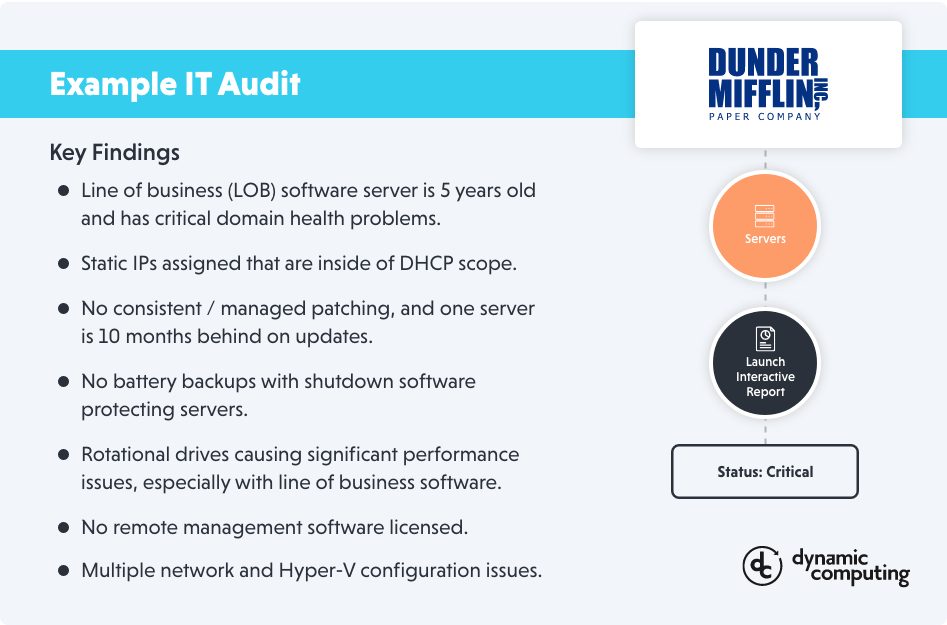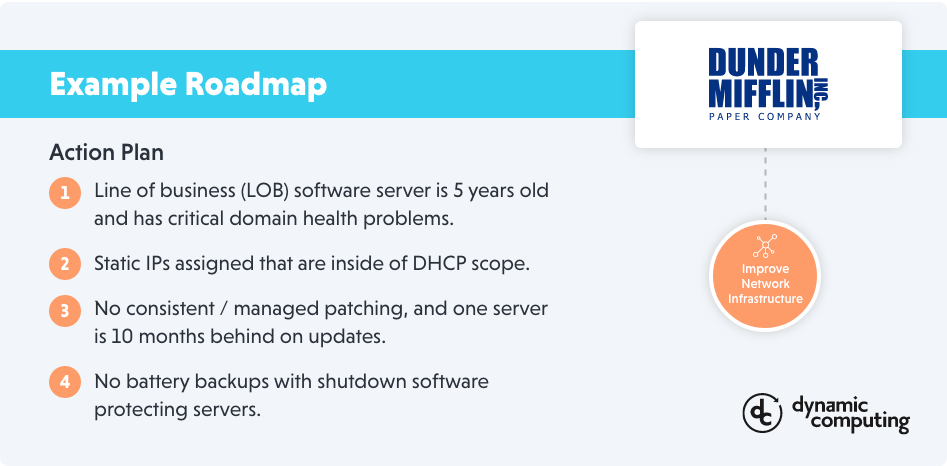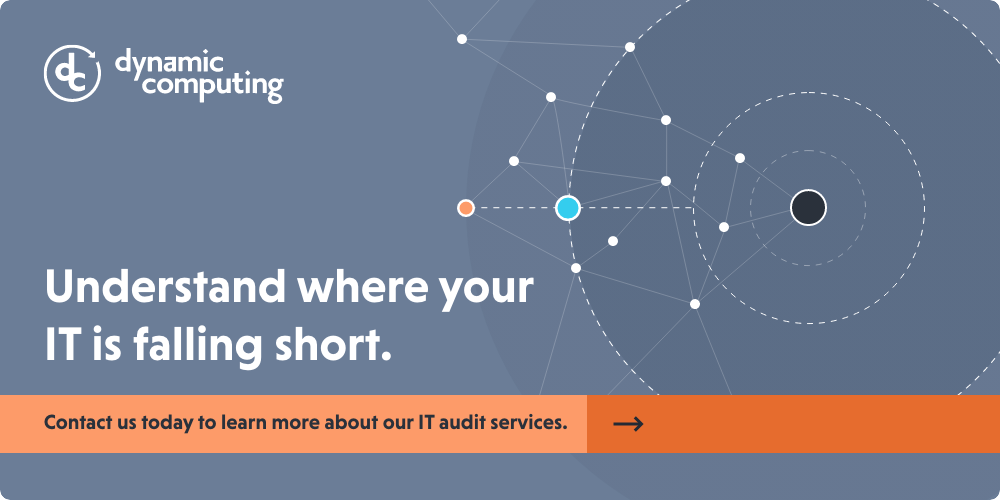Let’s talk about reaction.
Not in Newton’s Third Law sense, but in technology. Specifically, being reactive in IT decision-making.
Too often companies find themselves trapped in a cycle of reactive decisions when it comes to their IT infrastructure. It often begins with an incident or disruption that exposes vulnerabilities — a data breach, a system outage, or even a user complaint about slow response times.
When these issues arise, they trigger a sense of urgency and pressure to find a quick solution. And in the rush to resolve the immediate issue, decision-makers may overlook the underlying causes or fail to consider the broader implications for the company.
That’s a bad place to be. In IT, the goal should be proactive rather than reactive, and the first step to getting there is a comprehensive IT audit.
Benefits of an IT audit
Just as the name suggests, an IT audit is a forensic examination of your current IT landscape. A deep dive into your infrastructure, applications, hardware, software, and networking.
By conducting a thorough audit, companies and their IT provider are able to:
- Identify vulnerabilities in IT systems and processes. These vulnerabilities can include outdated software, inadequate security measures, or inefficient hardware configurations
- Ensure compliance with industry regulations and standards, which is particularly important in heavily regulated sectors like legal, healthcare, and life sciences.
- Optimize IT infrastructure by evaluating the performance of hardware, software, network configurations, and IT processes
- Improve security by identifying gaps that could potentially be exploited, such as outdated software or users who are no longer with the company but still have access to the network
- Streamline IT operations and take a proactive approach to resource allocation, which reduces costs and limits unwelcome surprises
How our IT audits work
When we conduct an audit for a company, we focus on these key areas:
- User information, including the number of employees, where they primarily work from, how they access and store data, and the applications they regularly use
- The IT environment, including the number of machines being used, the age of and make of those machines, whether the company uses on-premises servers or the cloud, and virtual machine usage
- IT projects, including current issues the company may be having, what they want to change, and their top priorities
To gather all this information, we conduct a series of in-depth interviews with executives. During these interviews, we uncover the company’s issues, goals, and desired outcomes from the company’s IT.
We also conduct surveys with all team members to learn more about the time they spend fighting tech issues, what tech improvements they would like to see, their current satisfaction with the company’s IT, and how IT may be negatively impacting the team’s performance.
Once these two steps are completed, we then send one of our senior engineers to visit the company to document its tech and how it’s currently configured. We search for anything connected to the network, and install specialized software on all of the company’s PCs, servers, and network equipment to identify all IT assets.
With all this information in hand, we present key findings to the company. Here’s an example of these findings for the fictional company Dunder Mifflin from the show The Office:

Along with key findings, we also present a detailed technology roadmap that includes the company’s goals and a prioritized plan for how technology can help achieve them. This also includes a customized IT capital and operating budget for the next two years so the costs of executing our plan is transparent.

Look before you leap
In our experience, not conducting a comprehensive IT audit at the start of a partnership is akin to trying to build a plane while flying it.
For companies, bringing an IT provider onboard who doesn’t fully understand the current state of its infrastructure usually leads to shoddy service and surprise costs, since it’s easier for the provider to continually jack up the price of their service as they “discover” new issues.
For providers like us, an IT audit allows us to really get to know the company and its needs so we can offer them a path forward that both ensures their IT infrastructure is secure and helps them achieve their goals


